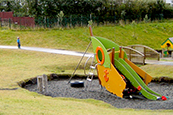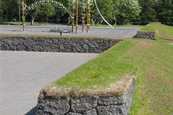




Transport Planning
For the past few years, mobility management has been making a niche for itself as an effort to reduce the ever-growing traffic and the strain on the road system in European cities. VSO Consulting has been working on making a few research reports concerning mobility management, such as how the transportation system can be better utilized with various and concise procedures that promote self-sufficiency and an ecological way to travel.
Among other things, these researches show how mobility management has been reported to show excellent progress in our neighboring countries, and has changed the travel patterns of the habitants toward a self-sufficient transportation. In accordance with the results of the research, the management of VSO has been working on implementing mobility management in various plans, there among land use, biking, and transportation plans.
Subjects
In mobility management a strategy is devised which includes the primary goals of mobility management in the area, the projects that need to be undertaken to achieve set goals and a time schedule for each project including who is responsible for enforcing it. Operation of mobility management can be very diverse but it mostly depends on the setting and its target group.
The size and composition of the project management plans can roughly be split in two. On the one hand there is mobility management plans for smaller areas or companies such as malls, schools, institutions or private firms. In that case, the target group is very defined, such as employees, clients or guests. On the other hand, there is mobility management for larger areas such as whole districts, certain town quarters, a whole city or municipality. In those cases, a coordinated and comprehensive plan is devised for the whole area which comprises many distinct operations that suit the many different groups within the sector.
Profit
A clear and efficient mobility management in which a foundation for self-sufficient and environmental friendly travels is built, results in expenditure cuts for the entire society because of the decrease of vehicular traffic and the strain on the road system is more spread. In that way a direct saving is achieved through less maintenance of traffic structures, fewer extensive new projects and the decrease of gasoline use. The gain of an efficient mobility management also consists of a clean environment, less air and noise pollution, better health and increased safety of pedestrians.
For further information, please contact Svanhildur Jónsdóttir



